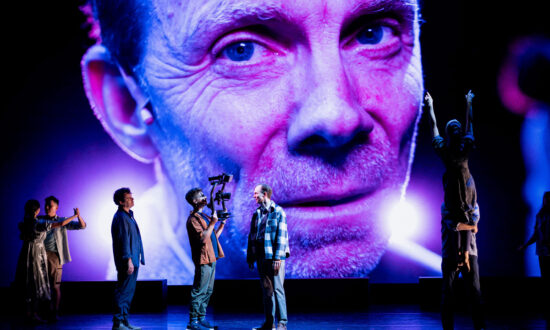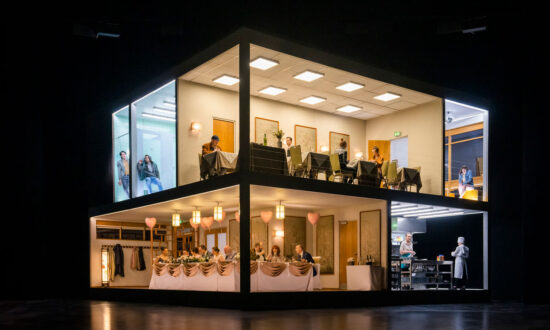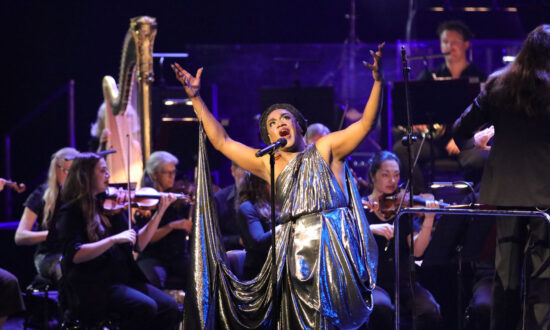The delightful opening sequence captures the essential David Gulpilil, a Yolngu man who through the force of charisma pioneered the depiction of Indigenous Australians on screen. The camera sits far away as Gulpilil, 67, walks down a red dirt road, his thin legs still carrying him although he is thin and frail. Then we glimpse an emu walking on the same path but further in front. They move together through the landscape on their matchstick legs, at peace in each other’s presence.
My Name is Gulpilil is a farewell message to the world that gives us some insight into Gulpilil’s understanding of what it was all about and how it happened. He is terminally ill with lung cancer and emphysema and we see him having chemotherapy, at doctor’s visits and accepting like a child the myriad coloured pills doled out by his carer, the stoic and funny Mary Hood – “I’m changing my name,” she says, when David calls for her again.
Director Molly Reynolds has managed to weave together the past and the present and it necessarily includes footage from some of Gulpilil’s films, including Walkabout (1971). He walked onto the set aged 14, a fully tribal man who was a gifted hunter and dancer among his own people. You see him then, sweet and curious, and full of self-confidence with no English and no training.
“I don’t have to try to act, I just jump in and the camera sees me,” he says later.
The story of a man bridging two worlds is familiar; the years lost to drinking and drugs, living in the long grass in Darwin and going to prison for domestic violence after breaking his wife’s arm with a broom. But there is more to learn about Gulpilil than this, and the most fascinating insights are into the way a man as celebrated as he is – his presence on stage at the Festival Theatre for this premiere screening triggered a standing ovation – continues to inhabit his own culture.
He paints accomplished depictions of his stories, and he is a master hair weaver, creating string to be used in his death rituals. He will stay in Murray Bridge probably until he dies and then return to his homeland of Ramingining in Arnhem Land, “back to country on a one-way ticket”.
The intersection between past and present works best when Gulpilil is taken to the locations of some of his films, including Mad Dog Morgan (1976), which he made with the tearaway US actor Dennis Hopper, now dead, and a man Gulpilil was fond of. He also loved being in Storm Boy (1976), he says, because it showed two people living in the one world in two different ways.
This is not a retrospective of Gulpilil’s life and work. The impact of living between two cultures was the subject of Another Country, in 2015, also directed by Reynolds, and a BBC documentary in the 1980s, Walkabout to Hollywood, showed the actor being feted at the peak of his fame. My Name is Gulpilil is more of a gentle farewell from the man to the world, a nuanced and personal goodbye that draws together the legacy he will leave behind.
My Name is Gulpilil (directed by Molly Reynolds, produced by Rolf de Heer, Peter Djigirr, David Gulpilil and Molly Reynolds) was commissioned by the Adelaide Film Festival Investment Fund. It had its world premiere on March 12 at the Festival Theatre as part of the Adelaide Festival program, and will be released in cinemas nationally later this year through ABCG Film.
Read InReview’s interview with My Name is Gulpilil director Molly Reynolds here.
Support local arts journalism
Your support will help us continue the important work of InReview in publishing free professional journalism that celebrates, interrogates and amplifies arts and culture in South Australia.
Donate Here




